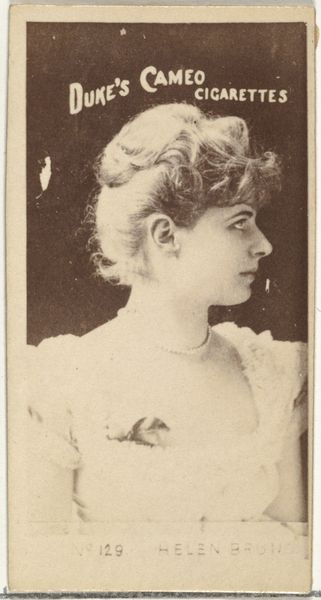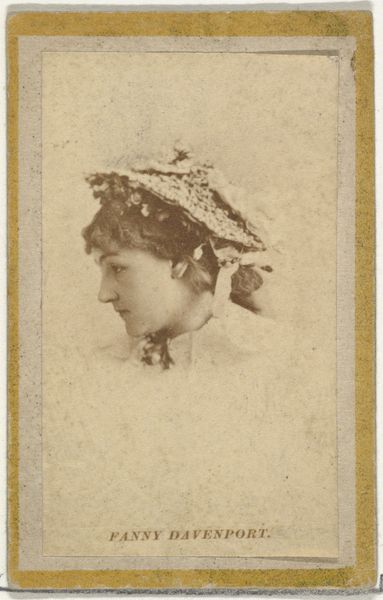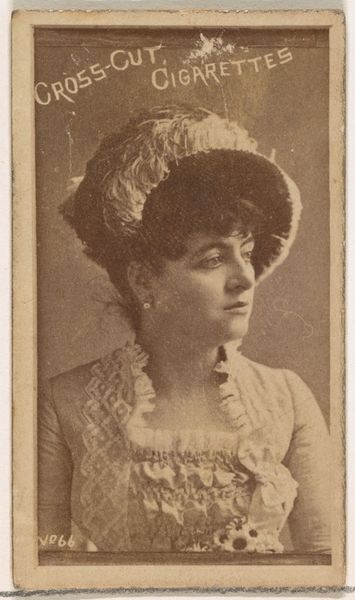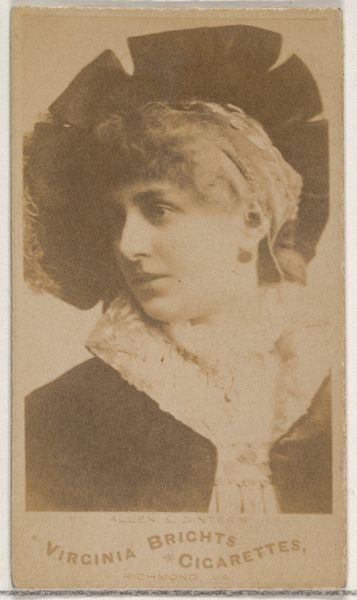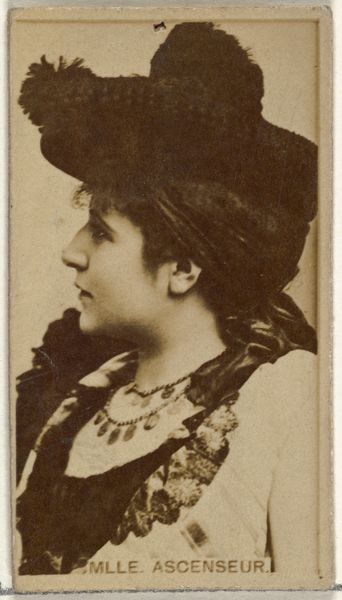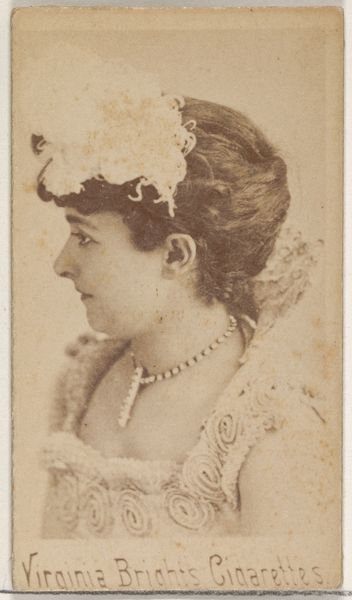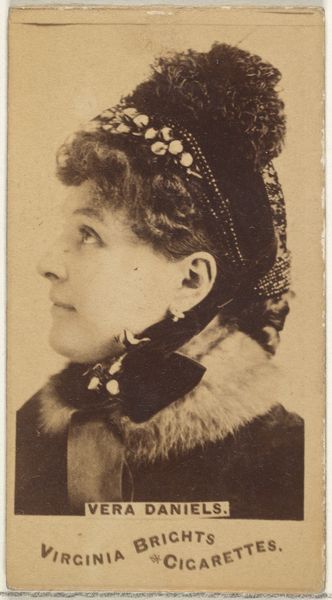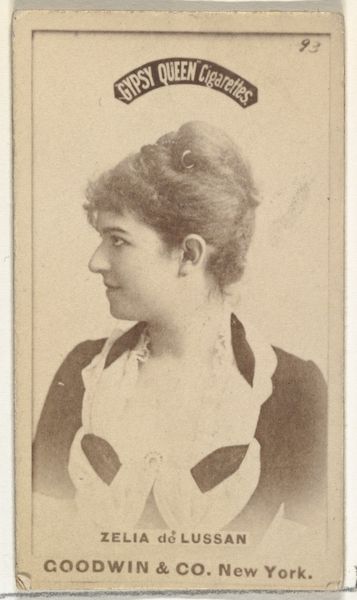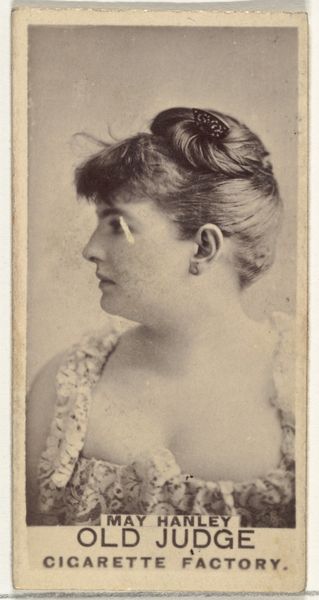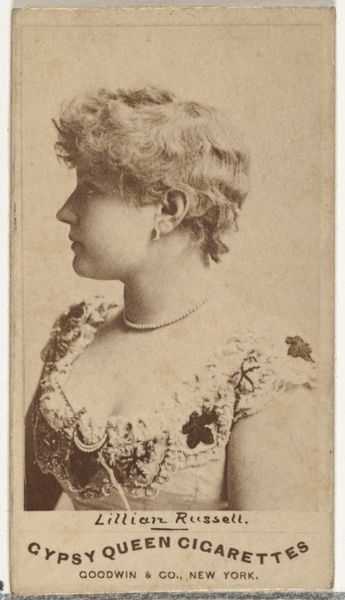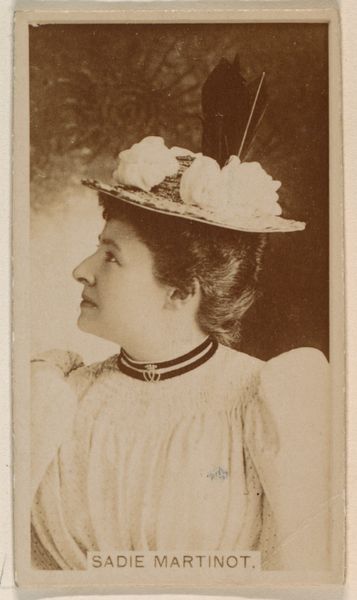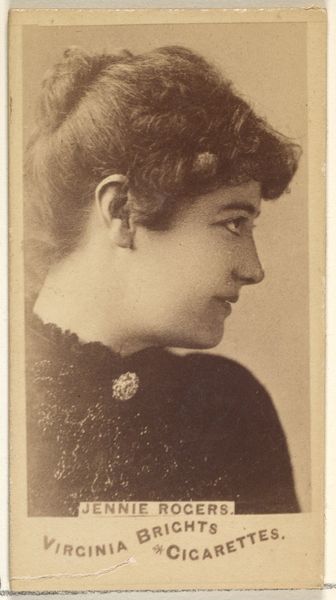
Estelle Clayton, from the Actors and Actresses series (N45, Type 1) for Virginia Brights Cigarettes 1885 - 1891
0:00
0:00
drawing, print, photography
#
portrait
#
drawing
#
still-life-photography
#
16_19th-century
#
pictorialism
# print
#
photography
#
19th century
Dimensions: Sheet: 2 3/4 x 1 3/8 in. (7 x 3.5 cm)
Copyright: Public Domain
Editor: Here we have a photographic print titled "Estelle Clayton, from the Actors and Actresses series (N45, Type 1) for Virginia Brights Cigarettes," dating between 1885 and 1891, by Allen & Ginter. There's a captivating sepia tone. What strikes me is the way light and shadow define her face; the composition seems both intimate and carefully constructed. How do you interpret the visual choices made here? Curator: Focusing on the photograph itself, note the careful tonal gradation. The artist modulates the light across Clayton's face, directing the viewer's gaze. The soft focus, common in pictorialism, diffuses the details. Consider how the photographer harnesses line and form to guide our observation—the graceful curve of the neck mirrors the sweep of the hat. Ask yourself how those contrasting textures contribute to the piece as a whole. Editor: So, the arrangement and form are keys here. I didn’t notice the echoing curves. Curator: Precisely. These repetitions aren't accidental; they create visual harmony. The limited palette further reinforces a unified aesthetic experience. Think of this print as a set of interlocking systems. Can you discern how it might use asymmetry to establish a visual relationship to other works from this series? Editor: That's insightful. Looking closer, I see a lot more deliberate compositional choices now. I had initially only responded to the immediate charm, but understanding the structure enriches the piece considerably. Curator: Precisely. By understanding the work, the careful crafting helps us understand how the piece as a whole has been constructed, offering an important new perception of it.
Comments
No comments
Be the first to comment and join the conversation on the ultimate creative platform.
